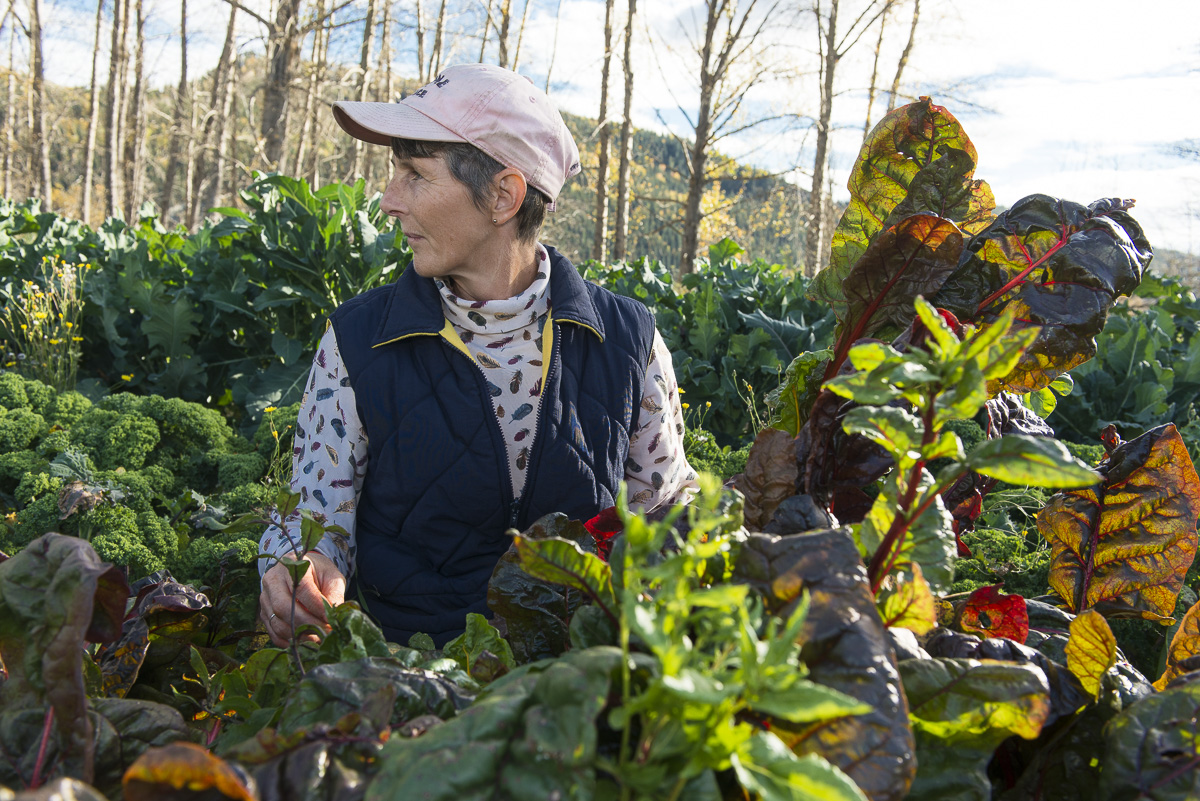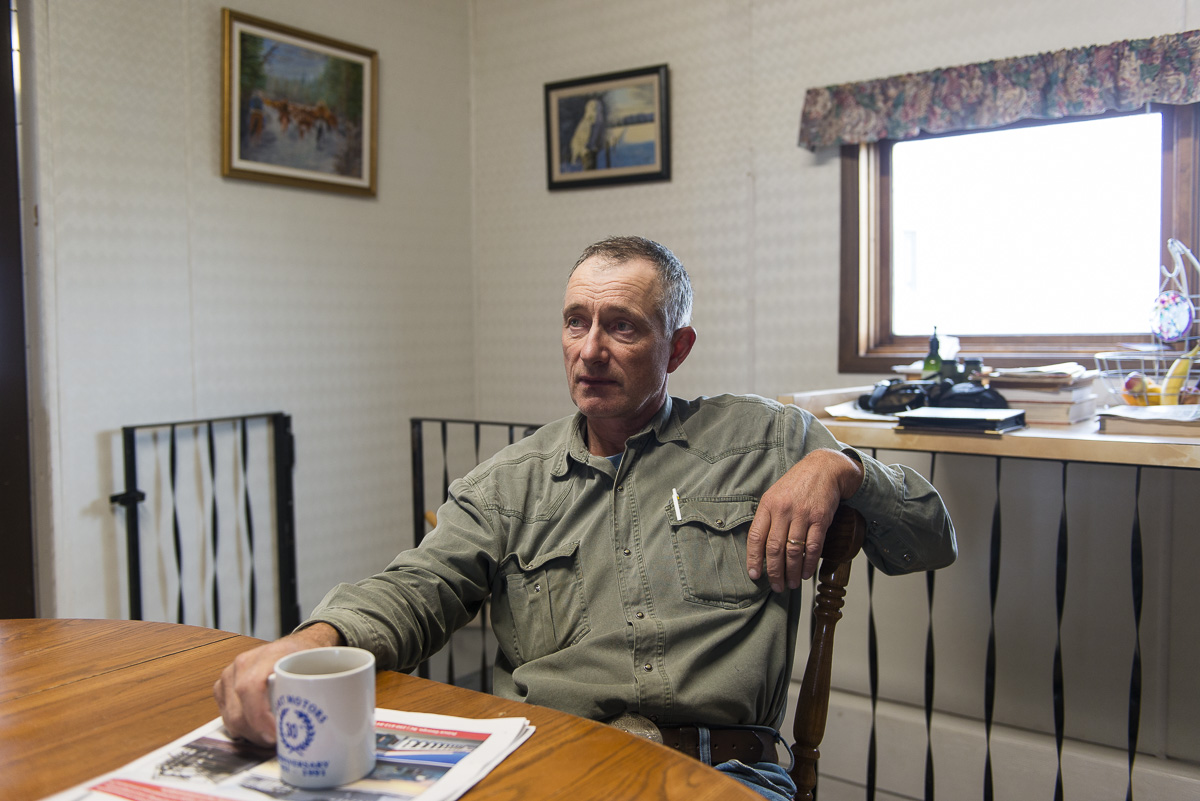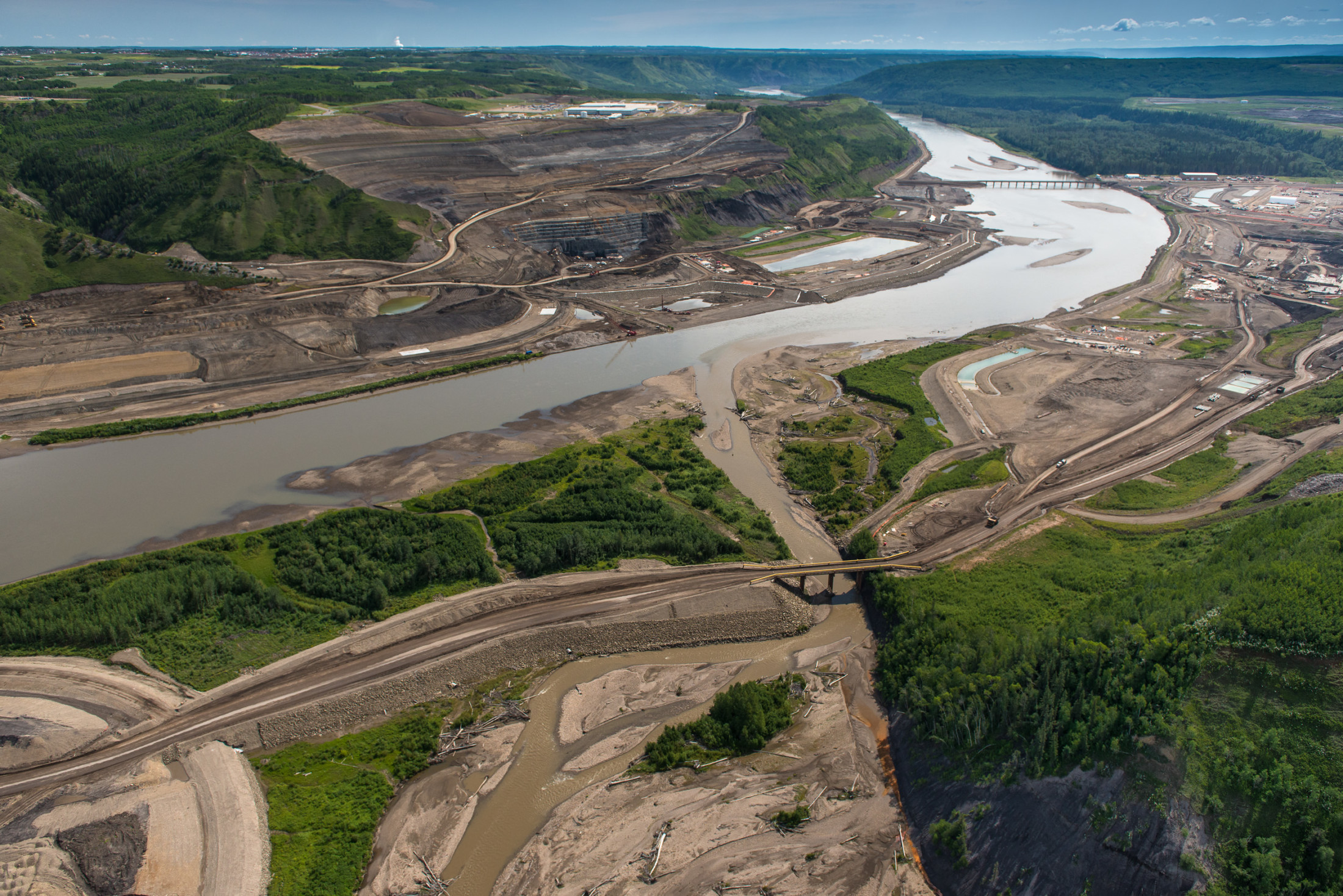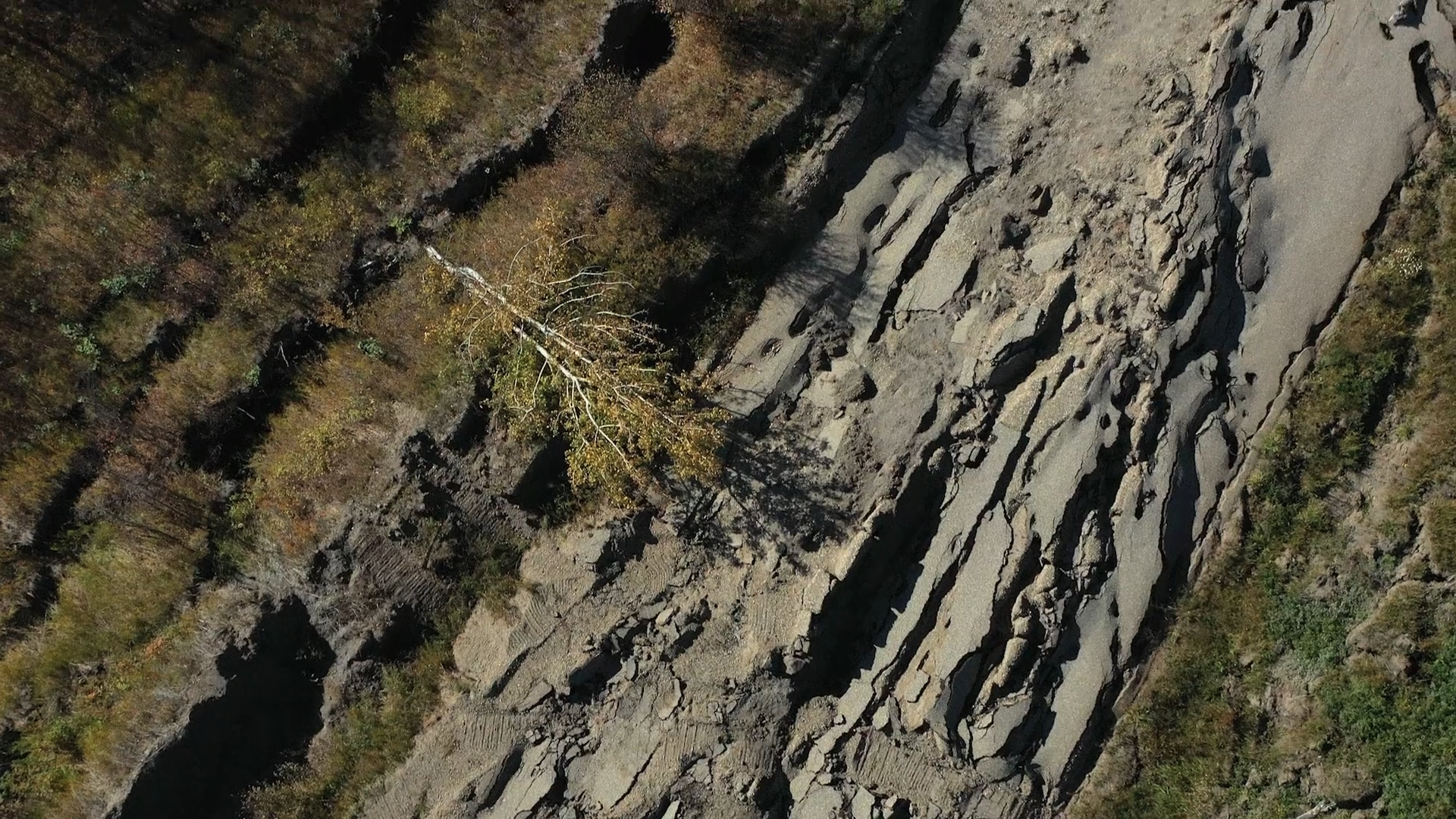
My love letter to Emma Gilchrist
Break out the champagne: Emma’s storied life and leadership in journalism has earned her the...
BC Hydro customers will save an initial $116 million a year if the B.C. government cancels construction of the Site C dam and the savings will only grow over time, according to a new report from U.S. energy economist Robert McCullough.
McCullough, who provided expert advice on the Site C project to B.C. cabinet in 2017, says stopping the Peace River hydro project now will also avoid significant geotechnical risks that BC Hydro hasn’t been able to resolve. Those risks were only disclosed to British Columbians on July 31.
Profound geotechnical problems, related to the dam’s faulty foundation, mean BC Hydro does not know how much it will cost to complete the publicly funded project, which is already billions of dollars over budget, or when it might be finished.
“Site C started on the wrong foot and has stayed on that foot ever since,” McCullough told The Narwhal.
Unlike other major hydro dams in B.C. and in U.S. west coast states, which were built in narrow rocky canyons, the Site C dam is being constructed on far less reliable shale, noted McCullough, who wrote the report for the Peace Valley Landowner Association, representing landowners who will lose their homes and farmland to the dam’s reservoir.

Arlene Boon harvesting vegetables in her market garden. The Site C dam would flood valuable northern agricultural land in a valley that has some of Canada’s richest soil. Photo: Garth Lenz / The Narwhal
“The banks are unstable and there is substantial tectonic activity in that area. The surface under the structure is shale — which adds significant risk as well,” wrote McCullough, an expert on power projects and former officer for a large hydroelectric facility in Portland, Oregon.
McCullough conservatively estimated it will cost $2.1 billion more to complete the dam, for a total price tag of almost $13 billion. That makes the project uneconomical, he said.
“The people of B.C. have a giant fiasco on their hands with Site C,” Ken Boon, president of the Peace Valley Landowner Association, told The Narwhal.
“I think we have to hold the government’s feet to the fire, to put politics and their own special interests aside and just look out for the interests of the public.”

Ken Boon, president of the Peace Valley Landowner Association, in the kitchen of the third generation farmhouse he shares with his wife, Arlene. The Boon’s fields will be flooded by the Site C dam or lost to the relocation of a provincial highway out of the flood zone. Photo: Garth Lenz / The Narwhal
Boon said new information about the Site C dam’s rising cost and unresolved geotechnical issues prompted the association to ask McCullough to reassess the financial viability of continuing the project.
In December 2017, the NDP government said its top two decision criteria for deciding to proceed with dam construction were the impact on ratepayers and the fiscal impacts and risks.
So the association asked McCullough to answer one question: “Is it in the best interests of British Columbians to immediately cancel or continue construction of Site C?”
The answer, McCullough said in an interview, is unequivocal: even though BC Hydro has spent $5 billion on the dam, the public utility will save money if the project is stopped and energy is procured from other sources. Those sources include wind and solar power, whose costs are dropping all the time.
McCullough urged the B.C. government not to fall into what economists call the “sunk cost fallacy,” equating it to buying an old car that needs constant, expensive repairs.
“The explanation about why you have to spend more and more money in keeping it running is that you’ve already spent so much money on it,” McCullough said. “At some point, it’s just cheaper to buy a new car.”
“We’re in this situation of having sunk a huge amount of money into a project that is not panning out — when we could simply close this book, open a new one, have the same amount of energy and far less risk.”

Clearing along the Peace River in preparation for Site C dam construction, July 12, 2018. Photo: Garth Lenz / The Narwhal
McCullough’s report was dovetailed by a C.D. Howe Institute “Intelligence Memo” to “British Columbia’s next government.” The memo says the costs of the Site C dam likely exceeded the cost of alternative “carbon-cost adjusted” natural gas turbines as of January 2019 and the case for the project is “getting weaker.”
The project’s new geotechnical and operational challenges suggest that “a significant budget increase can be expected,” says the memo, written by A. J. Goulding, president of London Economics International and an advisor to provincially owned hydro companies, and Mugwe Kiragu, a senior consultant at London Economics International who has a wide range of experience in modelling power system costs.
“Even assuming a conservative estimate of budget increases, the economics still favour cancellation and replacement with an equivalent carbon-cost adjusted CCGT [combined cycled natural gas turbines],” the memo says. It notes that replacement with storage-backed wind capacity “becomes more cost-competitive the longer the project is delayed.”
The Site C dam is “marginally economic” at current costs, according to the memo. “Our analysis shows that any meaningful cost increase makes cancellation a better choice,” Goulding and Kiragu state.
The Site C dam is set to flood 128 kilometres of the Peace River and its tributaries, forcing families from their homes and destroying some of Canada’s best farmland, habitat for more than 100 species at risk of extinction, and Indigenous gravesites and traditional hunting and trapping grounds.
The dam was announced in 2010 as a $6.6 billion project. It was given final approval in 2014 with a $8.7 billion budget and greenlighted in 2017 by the new NDP government with a $10.7 billion budget.
At a new price tag of $12.8 billion, McCullough calculates power from the Site C dam will cost $94 per megawatt hour to produce.
The power will most likely be sold to the U.S. for $40 per megawatt hour given B.C.’s significant energy surplus, McCullough said.
“In this case, BC Hydro loses 57.7 per cent on each megawatt hour produced by Site C.”
McCullough’s report zeroes in on a number of project risks, including the use of roller compacted concrete in construction, which he described as a “cost effective alternative to traditional construction methods.”
Instead of building the dam with cement that is cast in place, “roller compressed cement more closely resembles a layer cake, with layers being laid down sequentially and compressed,” the report said.
Although the use of roller-compacted concrete is an accepted construction practice, McCullough said a number of articles have questioned the reliability of the concrete if exposed to tectonic shocks, such as the earthquake that shook the Site C dam construction site in November 2018, forcing workers to evacuate.
The Site C project is located in a wider area known to be filled with faults that can become critically stressed during fracking operations for gas. In 2017 and 2018, more than 10,000 earthquakes occurred in the wider area, where fracking is prevalent and known to be triggering earthquakes.

The Old Fort road, crumpled by a November 2018 landslide on the notoriously unstable slopes of the Peace River. Photo: Jayce Hawkins / The Narwhal
McCullough said the articles’ authors found a significant risk of sliding or cracking, depending on the nature and preparation of the surface under the roller compacted concrete.
There is also a potential for leaks between the layers.
“We have added another component to this, which is the surface we’re building this on is itself slippery,” McCullough said.
“The shale is not a solid rocky valley, like we’re looking at with the other major British Columbian dams, but something that can liquify or solidify, depending on geological conditions … we’ve taken a layer cake and put it on top of an uneven and slippery surface.”
A number of factors make it uneconomical to finish the dam, even though 48 per cent of the project has officially been completed, McCullough said. That number drops to 43 per cent when the currently identified geotechnical problems are addressed, he said, noting there may be even bigger problems that have not yet been publicly disclosed.
Factors include escalating construction costs, unresolved geotechnical issues and risks with seismic activity, falling costs for wind and solar power, dropping interest rates and “the deterioration of Site C’s ability to compete in energy markets.”
Boon said the landowners were shocked to discover “how poor the economics of Site C still are.”
“Even if you discount all the money that has been spent already, and moving ahead with the money that has to be spent to complete the project — not including possible massive overruns because of foundation problems — it still doesn’t make sense economically to proceed.”
To write the report, McCullough said he had to comb through numerical data dating back to the beginning of the project because there is “astonishingly little information” publicly available.
He said it is very strange that BC Hydro hasn’t mentioned what percentage of the project has been completed by particular dates, because that information is part of software used for all major infrastructure projects.
“A decision like this in a U.S. state would have been far more public.”
Read more: Site C dam secrecy ‘extraordinary’, international hydro construction expert tells court proceeding
Boon said he was encouraged by Horgan’s comment during the Oct. 13 leaders’ debate for the provincial election, when the NDP leader was asked by moderator Shachi Kurl if the Site C project is the NDP’s “dumpster fire,” and if he would cancel the project. (The NDP have repeatedly characterized the BC Liberals’ handling of financially troubled ICBC as a dumpster fire.)
Horgan told debate viewers he is awaiting the results of a report from Peter Milburn, whom he appointed in July to examine the geotechnical issues and economics of the Site C project.
“When we see that report we’ll make a decision,” Horgan said. “I’m not going to foreclose anything at this point in time.”
But, pressed by Green Party leader Sonia Furstenau on Thursday during a CKNW leaders’ debate, Horgan refused to commit to cancelling the project if experts determine that it should not go ahead.
“I am disappointed John Horgan is continuing to ignore the evidence and refusing to provide British Columbians with a clear answer about his party’s plan in regards to Site C,” Furstenau said in a news release.
“To me, it is very clear that the job of elected officials is to listen to experts and make decisions that are in the best interest of all British Columbians, not just your political party.”
Boon said he wants to see Milburn’s entire report when it is complete, not a “polished, condensed version.”
“Economically, the people of British Columbia have lost a lot of money on the Site C project, no matter what happens moving forward,” Boon said.
“It might seem very bizarre to people to have all this work done and to scrap it, but at the end of the day that’s the only choice we may have economically.”
Get the inside scoop on The Narwhal’s environment and climate reporting by signing up for our free newsletter. On a warm September evening nearly 15...
Continue reading
Break out the champagne: Emma’s storied life and leadership in journalism has earned her the...

How can we limit damage from disasters like the 2024 Toronto floods? In this explainer...

From disappearing ice roads to reappearing buffalo, our stories explained the wonder and challenges of...
